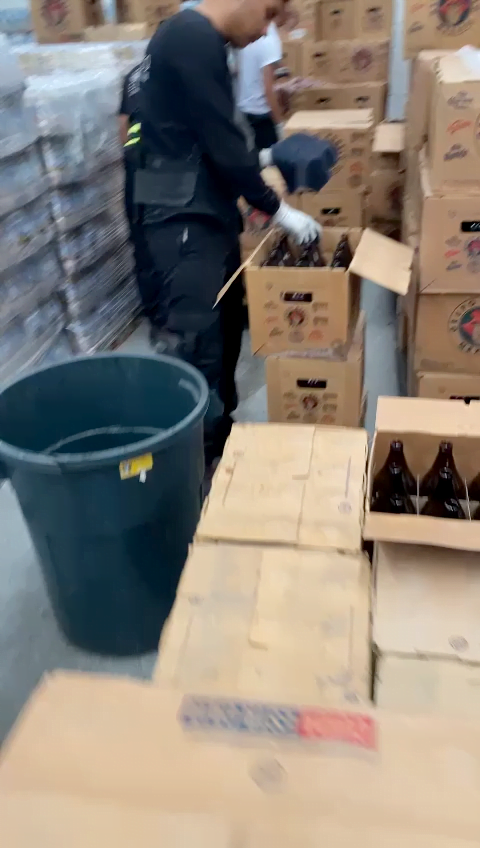Reusable Commerce Needs the Wine Industry’s Help – Views of Zachary Lawless (Good Goods)
Reusable Commerce Needs the Wine Industry’s Help – Views of Zachary Lawless (Good Goods)
The Four Models of Reusable Consumer Goods
We are in the early stages of shifting from disposable consumer goods to reusables. The World Economic Forum projects that between 20-40% of single-use packaging will become part of the reusable economy by 2030. And despite the perceived narrative about the difficulties of these models, there are already successful examples that demonstrate the financial and environmental opportunities of reusable commerce.

Figure 1. External targets – reuse share of packaging
Four main models have arisen for reusable commerce, including:
- Refill at home (e.g., Blueland, Soadstream).
- Refill on the go (e.g., Algramo, MIWA).
- Return from home (e.g., Loop, Danone Water Jugs).
- Return on the go (e.g., Coca-Cola Brazil Universal Bottle, Starbucks Returnable Cup),

Figure 2 The four models of reuse
On-the-go refill and return models have been proven to work at scale in several geographies, including Latin America, Japan and Europe. The most critical part of this infrastructure is the retailer network that makes returns convenient. However, scaling retailer participation is the major hurdle we face in the United States.
In Search of a Golden Opportunity
In 2017, our team launched Fresh Bowl, a grab-n-go food business that sells meals in reusable containers. Originally, we were vertically integrated and sold through our own retail locations. After COVID impacted the retail foot traffic, we tried moving into retail distribution.

Figure 3 Fresh Bowl meals in reusable containers
We encountered barriers from retailers’ operations teams over the logistics complexity, implementation costs, and packaging safety. Our small brand and limited product selection did not have the influence needed to overcome these objections.
We needed a new approach – a product and platform powerful enough to overcome these objections.
We believe wine is that category, and that wine MUST be the category to the lead the world for reusable commerce to succeed in the near-term. Its standardized glass packaging, influential and innovative brands, and vast network of retail locations make the wine industry perfectly positioned to lead the change.

Figure 4 Reusable wine bottle being filled
Wine’s current packaging can be reused without extensive manufacturing changes. Approximately 75% of the wine industry’s volume (by units sold) could transition instantly to one of just six standardized formats without changing producers’ current filling lines or operations. In contrast, it took Haagen-Dazs two years to redesign the packaging and operations to launch their ice cream in reusable containers.
In addition, wine producers have the sway to drive industry-wide change. For instance, AB InBev has established thriving beer bottle return programs for Modelo & Corona in Mexico by requiring distributors to exchange empty bottles for new beer.
Figure 5 Mexican distributor sorts and cleans returned bottles
In the light of the global glass shortage, producers have upped the required ratio of returned bottles to purchased bottles and created a “black market” for empty bottles. Some distributors are now willing to pay retailers up to four times the established Mex$20/crate for the empty bottles.
The Potential Impact of Reusable Wine Bottles
This extreme example demonstrates the leverage that major brands hold and the opportunity to align incentives to shift a large and complex supply chain across an entire country.
 Most importantly, wine can create the beachhead for reusable commerce. With wine sold at over 1M locations in the United States, this would give the country the largest return network in the world and a footprint at most major retailers.
Most importantly, wine can create the beachhead for reusable commerce. With wine sold at over 1M locations in the United States, this would give the country the largest return network in the world and a footprint at most major retailers.
Producers who strive to make a positive impact have the opportunity leverage their impact by leading the way. A normal producer in a reuse program, like Good Goods, might reuse thousands of bottles each year, but retailers can collect millions of bottles.
Wine bottle reuse represents just part of a much larger opportunity. If wine can drive reusable consumption, other industries will follow.
Figure 6 Field of dreams quote
To q uote the voice from Field of Dreams, “If you build it, they will come.” That same voice whispers to the wine industry. The industry needs to answer it collectively. Together, we can work towards a regenerative economy where the earth is freed up to produce resources (like wine), not house more waste.
uote the voice from Field of Dreams, “If you build it, they will come.” That same voice whispers to the wine industry. The industry needs to answer it collectively. Together, we can work towards a regenerative economy where the earth is freed up to produce resources (like wine), not house more waste.
For more information about Good Good, please visit our website (www.thegoodgoods.co). If you are a retailer, distributor or producer please fill out our contact form and a team member will connect with you within 24 hours.

An Article By Zach Lawless
CEO of Good Goods

